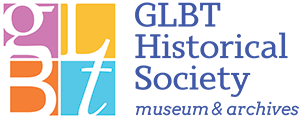A Safe Haven, A Welcome Sign, A Beacon of Light
A Safe Haven, A Welcome Sign, A Beacon of Light
The rainbow flag turns 43 this year, but it has lost none of its power to evoke joy, spread hope and inspire descendants. As we enjoy this year’s Pride season, with our segment of the 1978 rainbow flag on display at the newly reopened GLBT Historical Society Museum, we asked members of our communities to share what the rainbow flag means to them.
“I love that our iconography evolves, as we do as LGBTQ communities coming together under the same queer umbrella. I grew up with the pink triangle (reclaimed from the Nazis in the 1970s) and the lambda sign (as used by Gay Liberation Front members) and was happy when the pride flag by Gilbert Baker became popular. Today, I love the transgender, nonbinary, bear and progress pride flags. And if I see a Mexican pride flag, I’m in love, because it’s a mash-up and there’s something revolutionary about that. Yay for Pride in all guises!”
—Tina Valentin Aguirre, former chair of the GLBT Historical Society Board of Directors
“The LGBTQ community is as broad and diverse as all of humanity. What unites us is the experience of coming out. For those still in the closet, the rainbow flag is a beacon of light to a life lived in shadow. For those who have broken down the closet door, it is a defiant symbol of pride and liberation. These shared experiences are woven into every rainbow flag.”
—Charley Beal, president of the Gilbert Baker Foundation
“Asexuals often feel alone and isolated. Invisible. We needed a symbol that was ours and could be used to lead the fight for visibility and acceptance, to show community. The rainbow flag was an inspiration and its history and power was a reason many decided the way to go about this was a flag of our own.”
—Neth Dugan, member of the Asexual Visibility and Education Network (AVEN), whose members designed the asexual pride flag in 2010
“In the early 1990s, I traveled unescorted through Europe between London, Germany, Paris and Spain, on business and pleasure quite often. When I would spot a rainbow flag sticker in the bottom corner of a storefront window, it was always a welcome sign. A great reminder of the place I call home—San Francisco.”
—Juanita MORE!, San Francisco drag legend, Empress LVI of the Imperial Council of San Francisco
“The rainbow flag is a dear reminder of my political activation in the mid-1970s. The symbolism nests the call to visibility and community love many were experiencing then, so it’s no wonder to me that the flag continues to resonate as a symbol of positivity for the LGBTQ community and our allies. Not to mention that it serves as a delicious reminder to our would-be detractors that we, as a community, are a force to be reckoned with.”
—Daniel Nicoletta, photographer, former employee of Harvey Milk at Castro Camera
“When I first moved to San Francisco after living and experiencing queerdom in New York, Chicago and Atlanta, I was impressed by the beauty of the rainbow of representation under the flag. But a few years later I was again reminded of its power when a friend from Belgium was astounded by the flags down Market Street and at City Hall. ‘We have no such support from our city,’ she said. We are so lucky to be here!”
—Pamela Peniston, artist, photographer, founding member and artistic director of the Queer Cultural Center
“When I was younger walking home with a friend from church, we passed a house that had a rainbow flag in the window. He told me his mother said evil sinners lived there and we were to avoid that house. For me though, this house didn't feel evil but warm and inviting. I didn't have words for who I was then, but in a way, seeing that flag spoke to the sleeping Queer within myself.”
—Daniel Quasar, designer of the progress pride flag in 2018, featuring the trans colors and black and brown stripes
“The rainbow flag is a symbol of pride, hope, and security. As an African American transgender woman, I look toward the rainbow flag and the transgender flag for pride as well as a safe haven. I think it’s amazing to have a flag the symbolizes something that I am so proud of being: a young, proud transgender woman. The flag in itself is proof that we can live in unity, despite division in our country. I am deeply inspired by Gilbert Baker, and I hold the LGBTQ and transgender flags dear to my heart because they are a true representation of hope.”
—Ivory Smith, program assistant for the Transgender District
“I appreciate the original intent of signaling diversity through the symbol of the rainbow, and appreciate even more recent redesign efforts to highlight people of color, Two-Spirit, trans, nonbinary and leather constituencies.”
—Susan Stryker, associate professor of gender and women’s studies at the University of Arizona
“When I first saw the rainbow flag, it was 1998, I was a graduate student at UCLA, and I had just come out to my parents and family with much struggle. I was in San Francisco doing research for a paper at the GLBT Historical Society and staying in the Outer Sunset in my father’s home. I was dying for a much needed evening of unwinding in the Castro, so I invited my straight buddy, an Asian American who was a bit of a player. I climbed on to the back of his motorcycle and as we zoomed down Market Street, the rainbow flag unfurled in front of me. I felt so much emotion, pain mixed with pride, that only a flag of that size waving in the wind could evoke.”
—Amy Sueyoshi, dean of the College of Ethnic Studies at San Francisco State University











